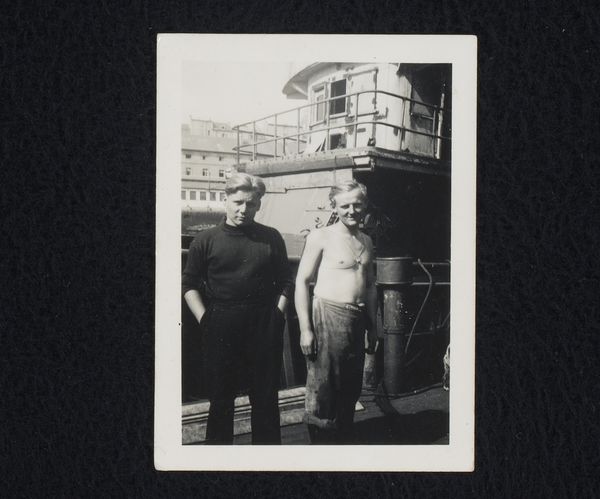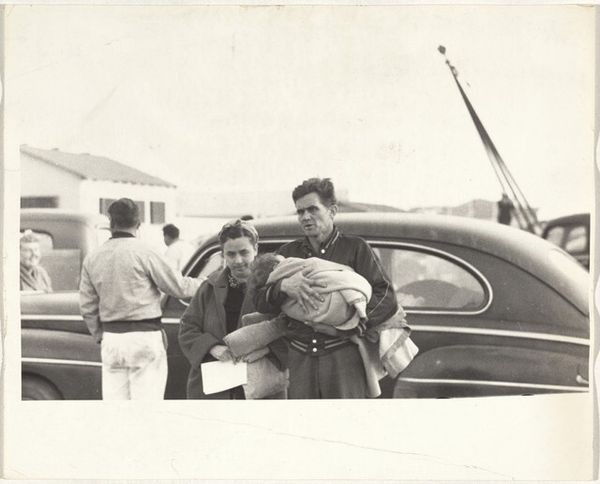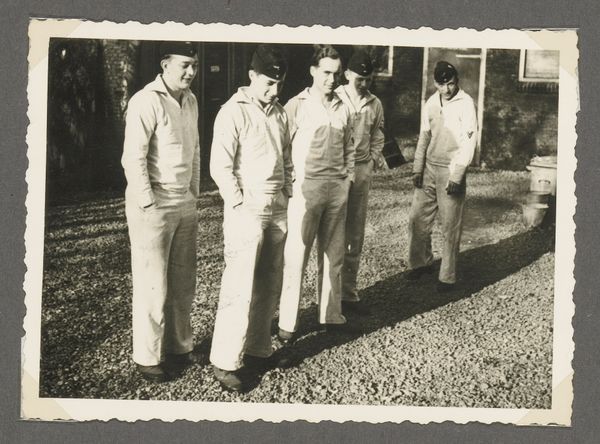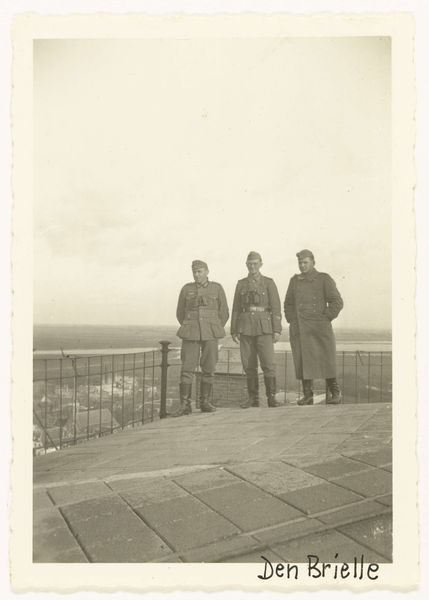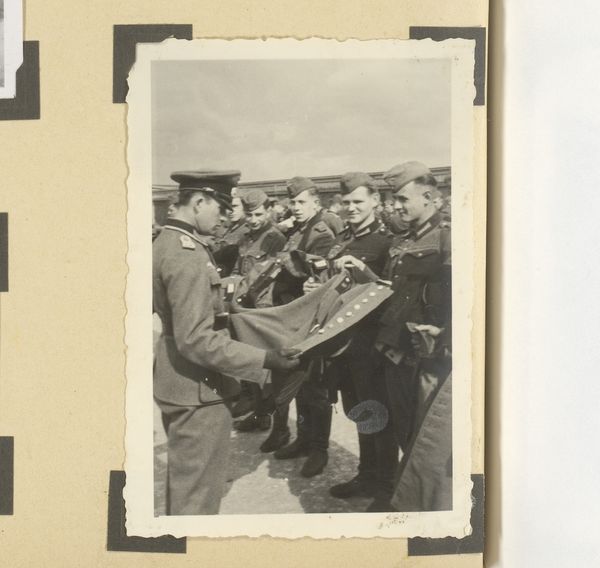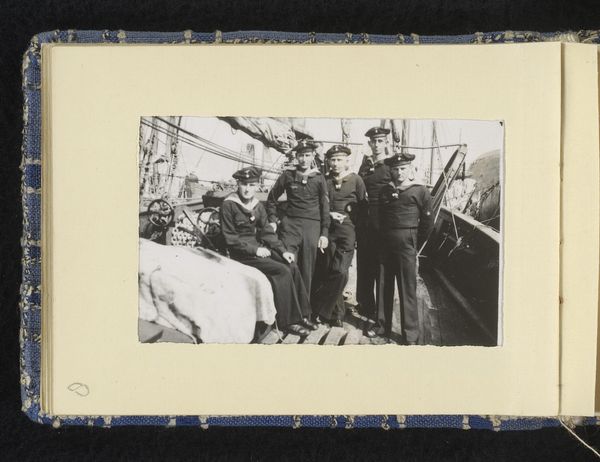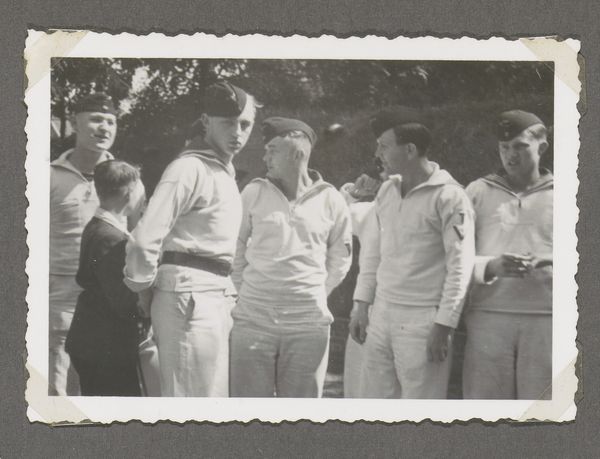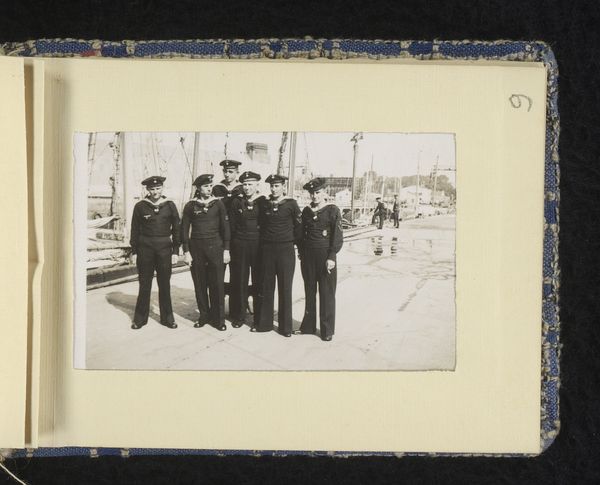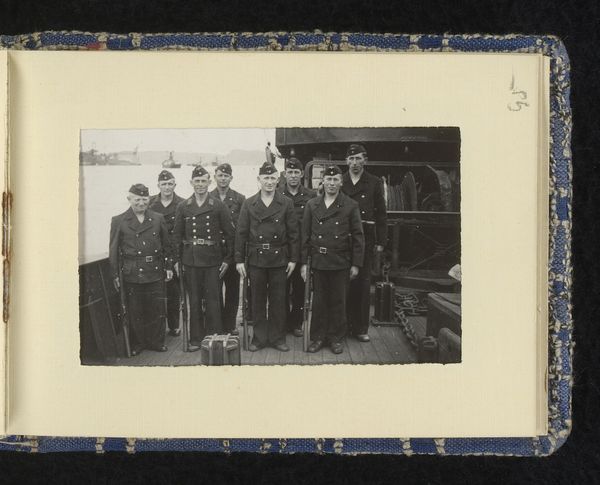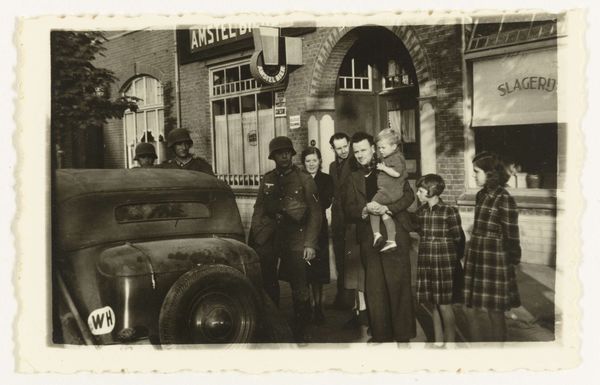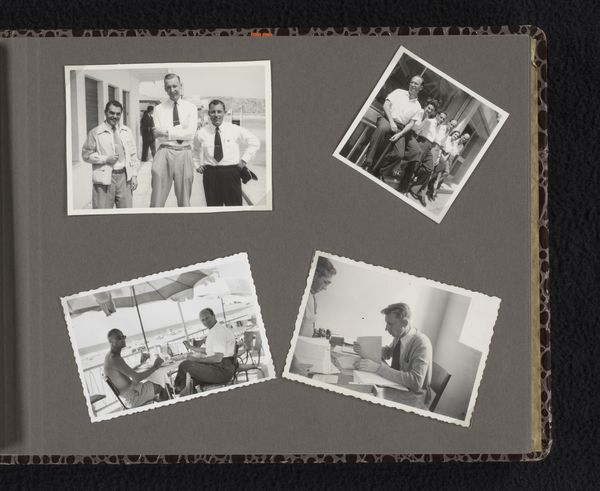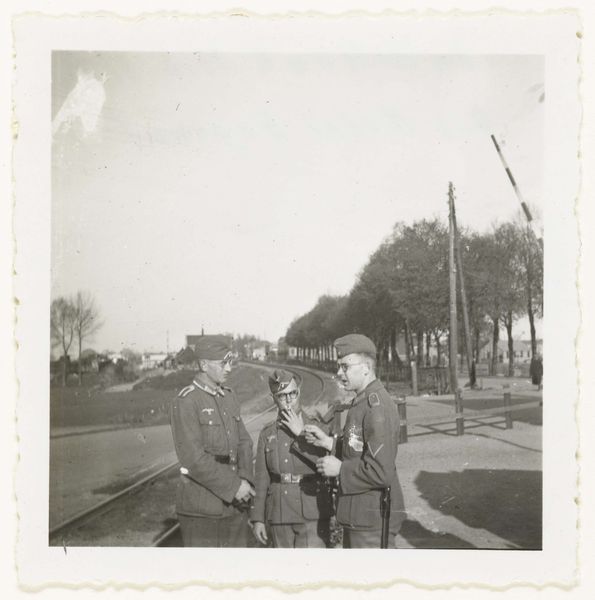
photography, gelatin-silver-print
#
portrait
#
print photography
#
photography
#
gelatin-silver-print
#
genre-painting
#
modernism
#
realism
Dimensions: height 6.5 cm, width 6.5 cm
Copyright: Rijks Museum: Open Domain
Editor: Here we have "Vier Duitse militairen met auto's," or "Four German Soldiers with Cars," a gelatin-silver print, likely taken between 1940 and 1945 by an anonymous photographer. The cars and soldiers look pretty ordinary; it's a banal scene. What draws your attention? Curator: I'm struck by the materiality of the photograph itself. Consider the gelatin silver print—mass-produced, utilitarian. This connects it to the industrialized war machine, doesn’t it? The means of photographic production and reproduction served a very specific purpose during wartime. How do you think the photograph’s intended purpose shaped its composition? Editor: That’s an interesting point! Maybe the utilitarian intent affects the subjects. They almost blend in with their surroundings, becoming another cog in the war effort’s material culture. Curator: Exactly. Think about the labor involved: the anonymous photographer, the development process, the paper production. It's all feeding into a system. It’s not about individual genius but the relentless efficiency of production and how it implicates everyone. And who might be consuming these images and for what purpose? Is it simple documentation, propaganda, or something else entirely? Editor: So you see the banality as something manufactured, linked to larger power structures. That shifts my perspective quite a bit. Curator: Precisely. The value isn’t just in what is shown, but how it's made, distributed, and consumed. The photograph, like the cars and the uniforms, are artifacts of a society built on a very specific type of industrialized labor. What would we make of the image if we understood it was intended for one family’s eyes? Editor: Viewing the artwork with a focus on production adds another layer to understanding wartime imagery, for sure. It makes me think differently about the people and even objects depicted in photographs of this period.
Comments
No comments
Be the first to comment and join the conversation on the ultimate creative platform.
